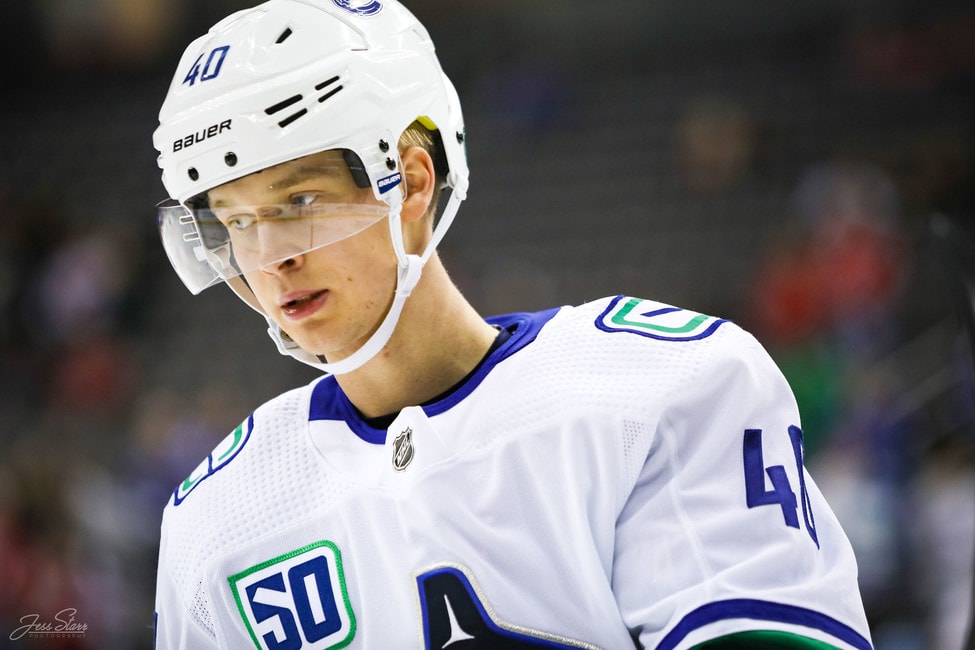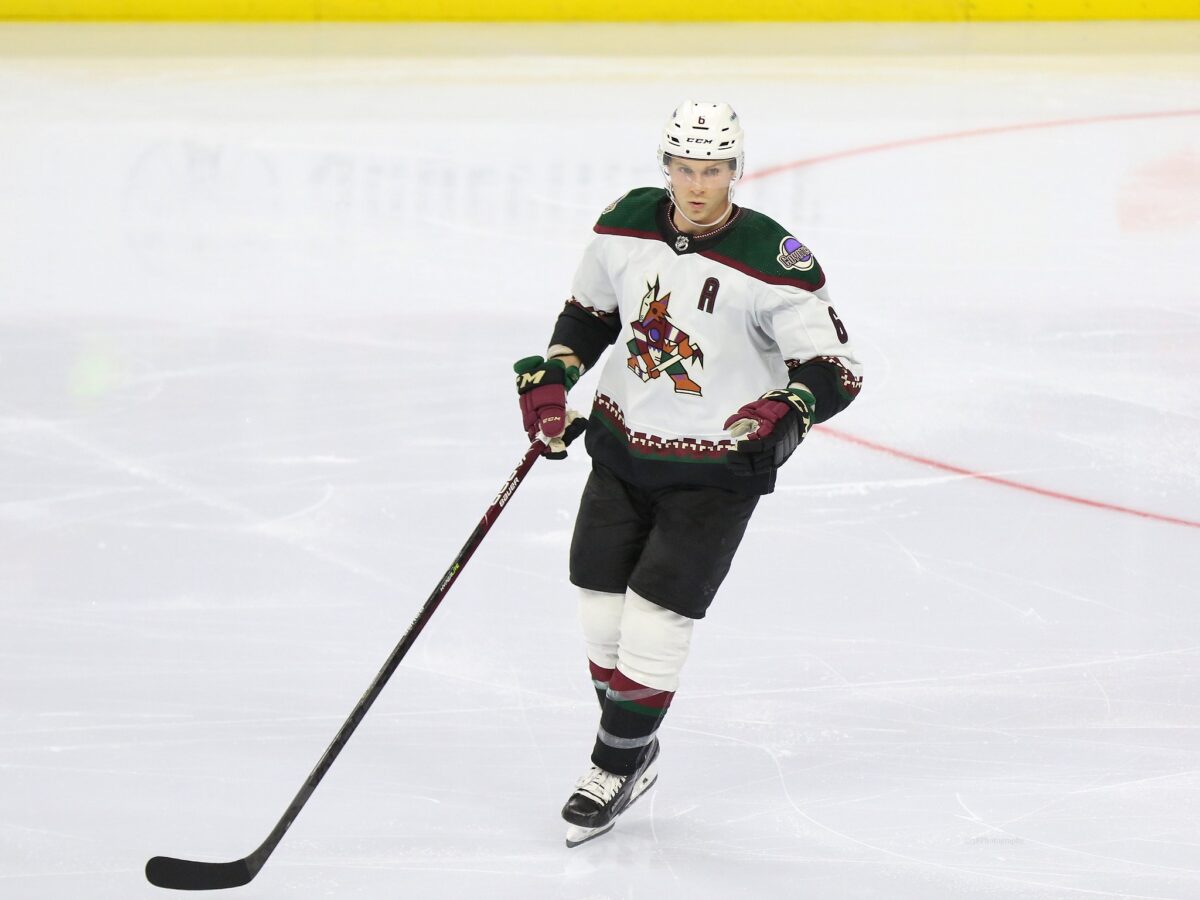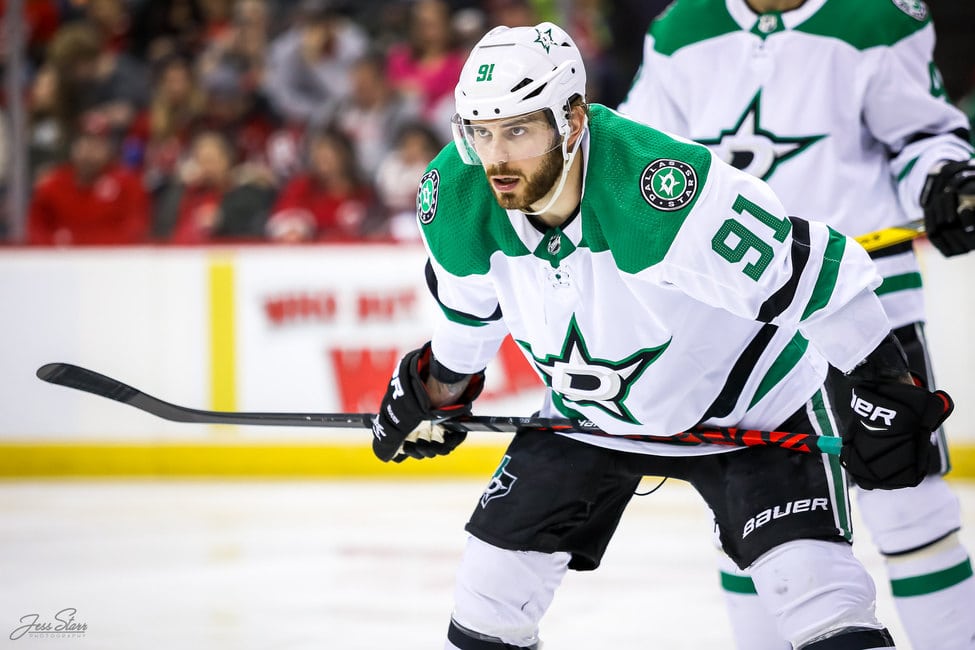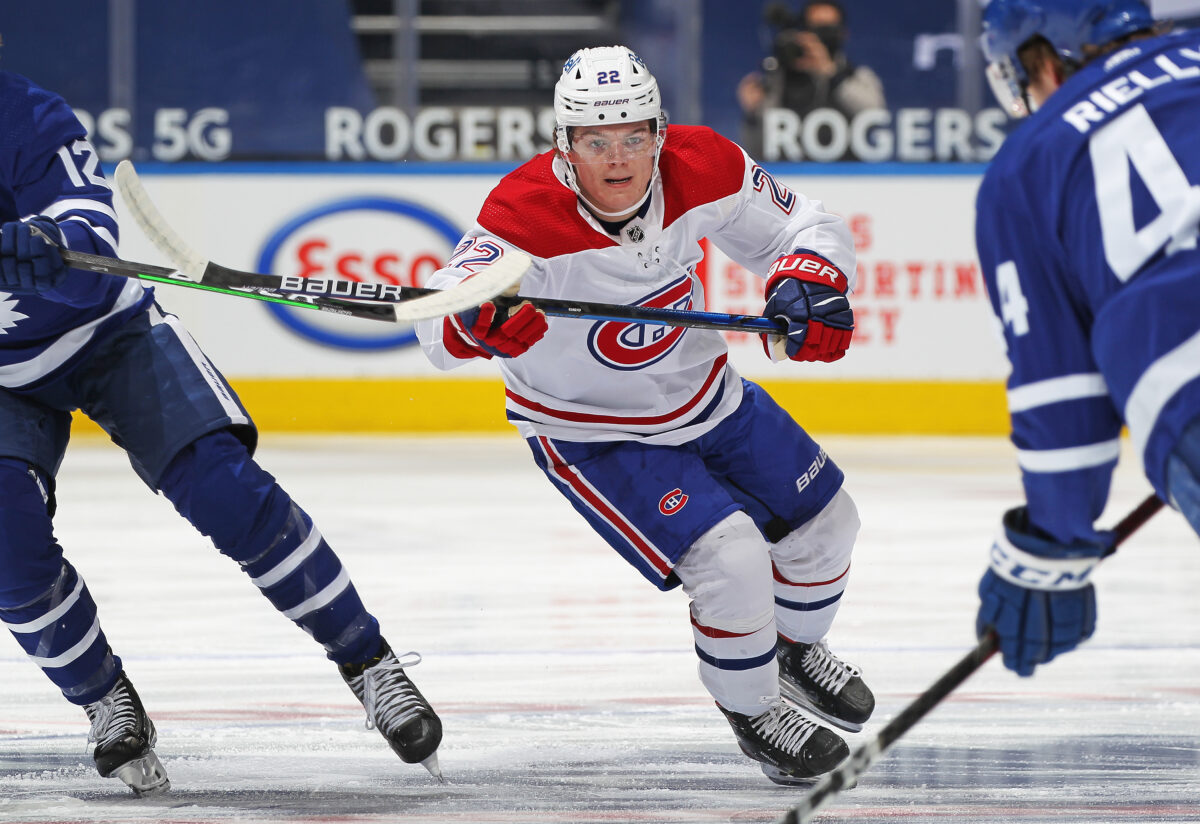Due to a plethora of issues ranging from franchise turmoil to the ruthlessness of puck luck, the players included on this list have been disappointing through the first part of the 2021-22 season. That’s not to say that these five individuals lack the tools to reverse course, or are now considered bad players, but each one has shown frustrating flashes of their true potential.
This is the fourth and final entry in a series chronicling the NHL’s most notable teams and players, both good and bad, from the first third of the season. The articles discussing the most surprising teams, the most surprising players, and the most disappointing teams can be found here.
Without further ado, here are the NHL’s five most disappointing players of the season so far.
Elias Pettersson, Vancouver Canucks
Although Bruce Boudreau’s recent appointment as the head coach of the Vancouver Canucks appears to have breathed new life into Elias Pettersson, there’s no arguing that the Swedish sensation has faltered this season. The phenom has only tallied 16 points through 31 games, and his shot (4.4 shots-per-60 minutes) and chance-generation (0.48 individual expected goals per-60) numbers at 5v5 are the worst of his young career. Further, his impacts at the defensive end of the ice are worrying, with the Canucks conceding a majority of the scoring chances and high-danger opportunities with Pettersson on the ice.
A cavernous shooting percentage (SH%) is likely to blame for his heavily slashed counting stats, with the 6.45 SH% he’s posted thus far more than half of his previous career low of 15.2%. As a result, it’s logical to expect his scoring output to experience an uptick as he regresses back to his normal conversion rate, but the aforementioned reduction in chance creation remains a cause for concern.

It’s not as though Pettersson has been shackled with inferior line-mates either, as he can count Quinn Hughes, Brock Boeser, and J.T. Miller as his three most frequent on-ice companions. Digging deeper, the shortcomings of Tyler Myers and Tucker Poolman – the next on the list – likely contribute to a stagnation in the team’s transition game, frustrating skilled players who thrive off of smooth facilitation from the back-end.
The franchise clearly hopes that Boudreau can unlock Pettersson’s limitless potential, and his tenure with the offensive juggernaut Washington Capitals of the early 2010s is credible evidence to that assertion. With a new taskmaster in tow, the budding superstar should straggle back onto the path of prosperity soon enough.
Philipp Grubauer, Seattle Kraken
There’s no sugar-coating it. For what he’s slated to earn this season, the opening stanza of Philipp Grubauer‘s tenure with the Seattle Kraken has been a colossal disappointment. Only nine goalies have a greater cap hit than the German net-minder ($5.9 million), and he’s done little to approach the standard of performance expected of someone commanding such an expensive financial commitment.
According to goals saved above expected (GSAx), a metric which compares how many goals a goaltender has prevented based on the quality of chances he has faced, Grubauer ranks dead last this season.
What makes this revelation all the more staggering is the strength of the Kraken’s defensive schemes at five-on-five. Despite being shielded by Seattle’s rigid structure (they rank in the top five of the rates at which they concede shot attempts, scoring chances, high-danger chances, and expected goals), he’s been less effective than the goalies responsible for backstopping the league’s worst teams.
What works in Grubauer’s favour is the elasticity of historical precedent. In both the 2019-20 (1.7) and 2020-21 (5.2) seasons, the former Colorado Avalanche net-minder was a net-positive in terms of GSAx, despite facing a lighter workload behind the rising Western Conference contenders. His single-season save percentage (SV%) never dipped below .915 prior to this campaign, and his moonlighting in relief of a struggling Braden Holtby in 2017-18 sparked the Capitals’ eventual Stanley Cup triumph.
Even if he never approaches the Vezina Trophy conversation, the Kraken’s defensive blueprint and his statistical priors indicate that he eventually finds his previous form. Unfortunately, the over-$30 million that Grubauer is owed over the life of his current deal leaves no wiggle room – it’s Vezina caliber goaltending or bust.
Jakob Chychrun, Arizona Coyotes
Just how poisonous has the atmosphere gotten in the desert? After a season in which he led all NHL defensemen in scoring (18 goals), Jakob Chychrun suddenly finds himself on the trade block, with the dysfunctional Arizona Coyotes gauging the market for their previously untouchable blue-line cornerstone. How did things get to this point?
Chychrun has fired the sixth-highest shot attempts among all defenseman this season, with only a pair of goals to show for his efforts. It’s not as though generated fewer looks either. His shot-rate this season (7.81 per-60) is only slightly lower than last year (8.06 per-60), and is still significantly higher than his previous high of 6.54 per-60 in 2018-19.
The main culprit is in the quality of those chances, as Chychrun’s shots are collectively less threatening than a year prior. His individual scoring (3.39 to 2.97 per-60) and high-danger (0.92 to 0.19) chance rates have cratered in 2021-22, with both marks representing career lows. The volume remains, but it appears as though Chychrun is trying accomplish too much himself which leads to a number of valiant, but fruitless attempts on goal.
You may also like:
- Oilers’ Skinner in Line for Vezina Trophy Winning Season
- Colorado Avalanche Won’t Be Contenders This Season
- Oilers: 8 GMs Who Would’ve Been Better Hires Than Stan Bowman
- New York Rangers’ 4 Best Contracts for 2024-25
- 3 Winnipeg Jets Who Could Earn a Roster Spot in 2024-25
Chychrun’s exasperating offensive woes have also extended to the defensive end. After a season in which he posted respectable possession numbers which hovered around a break-even 50%, this year’s results have resoundingly tanked.
Despite actually conceding fewer shots and chances per-hour this season, the Coyotes are hamstrung by a limp offense, which is the root cause of Chychrun’s abysmal share of expected goals (44.3%) and high-danger chances (45.1%) at five-on-five. He’s also the current owner of the NHL’s green jacket, boasting an astounding -29 plus-minus which is 13 goals worse than second place (Nick Paul, -16). There are many issues with plus-minus and I refrain from using it in my analysis but when a player is so far ahead (or behind) of the pack, there’s a story to be told.

Underlining Chychrun’s struggles is the uncomfortable reality that Arizona committed to a full-scale rebuild this past offseason, markedly weakening the defenseman’s supporting cast. On top of selling off Oliver Ekman-Larsson and Conor Garland to the Canucks, the Coyotes also waved goodbye to underrated contributors in Michael Bunting and Alex Goligoski during an eventful free agency period.
Arizona’s on-ice incompetence is by design as the eternally downtrodden franchise clearly has eyes on the renowned 2022 and 2023 drafts, with potential franchise saviours in Shane Wright, Conor Bedard, and Matvei Michkov available for selection in consecutive years.
For teams looking to snag Chychrun on the cheap, a rebound seems inevitable. His individual (1.69 percent) and on-ice (4.37 percent) shooting percentage are impossibly low, with his assist totals are indicative of a total lack of teammates capable of consistently finishing chances. In a new environment where he’s flanked by more talented teammates, Chychrun should return to the levels which saw him garner consideration for Canada’s 2022 Olympic roster.
Tyler Seguin, Dallas Stars
To say that the past two seasons have been difficult for Tyler Seguin is an understatement. His efforts in the Dallas Stars‘ unexpected trip to the Stanley Cup Final were hampered by a hip injury, eventually requiring surgery which relegated the star center to only three appearances in the 2020-21 campaign.
This year’s depressed offensive output – 12 points in 29 games – is likely a product of lingering recovery issues, but it’s a letdown nonetheless. His 14 points in 32 games since the 2020 Playoffs are a stark contrast from his statistical prime where he scored at least 70 points in six consecutive seasons beginning with the 2013-14 campaign. He’s struggled to reliably carve out dangerous chances, posting career lows in his 5v5 shot-attempt and individual expected goals rates, which suggests his offensive downturn is due to more than just an unfortunate run of shooting luck.

Seguin’s physical decline is contributing to his inability to fulfill his defensive duties as a centreman. His leaky on-ice impact (43.1% expected goals share) is notable, and he’s now unable to out-scoring his sudden defensive deficiencies.
Perhaps it’s unfair expect Seguin to be the same player he was pre-injury, but his history of production (0.84 points-per-game) and age (only 29) suggested he’s still capable of being a reliable offensive outlet even after a lengthy recovery process. As a result, a rapid increase in production from Seguin in 2022 isn’t outside the realm of possibility.
Cole Caufield, Montreal Canadiens
It’s arguable that no one enjoyed a more meteroic rise in the back-half of the 2020-21 season than Cole Caufield. Immediately after winning the Hobey Baker Award as the nation’s top collegiate player while starring for the Wisconsin Badgers, Caufield shacked up with the Montreal Canadiens’ American Hockey League (AHL) affiliate Laval Rocket. He earned an NHL call-up after scoring four points in two games, and quickly made his mark with five points in 10 appearances to end off the regular season.
Next, the rookie sniper tallied 12 points in 20 playoff games as the Montreal Canadiens enjoyed a riveting run to the Stanley Cup Final where they ultimately succumbed to the Tampa Bay Lightning. Despite falling short, the minitaure marksmen looked set to build upon his impressive introduction to the NHL, challenging for the Calder Trophy as the league’s best rookie. Instead, Caufield and the Canadiens’ have suffered under objectively one of the worst seasons in franchise history, now sitting second-last in the entire league. On top of that, Caufield was banished to the AHL to revive his game, although he worked his way back after scoring five points in six games.

In attack, he’s averaging nearly three fewer shots per-60 in all situations, and his SH% this season (1.72 percent) pales in comparison to his more prolific 13.3% conversion last year. His tactical immaturity has been highlighted as opponents have compiled a greater amount of game film and pinpointed his weaknesses. At five-on-five, the Canadiens’ only control 45.2% of unblocked shot-attempts (FF%) and 44.4% of high-danger chances, suggesting Caufield has room for improvement on the defensive end.
Related: Canadiens Need to Start Gorton Tenure with Fire Sale of Veteran Players
In fairness to Caufield, the absence and departures of Phillip Danault, Corey Perry, Shea Weber, and Carey Price robbed him of a core group of veterans capable of guiding young talent through the turbulence of an NHL season. The sophomore slump is a common phenomenon experienced by many a prized prospect, and the heralded forward should return to his high-flying ways with more professional seasoning.
2022 Gives the Most Disappointing Players a Shot at Redemption
As the calendar turns to 2022, each of the five players have the opportunity to redeem their seasons, and return to their previously dizzying heights. Whether it’s the annoyance of lingering injury troubles, a discombobulated playing environment, or just plain old bad luck, those on this list are hoping for the tides to turn. Even so, the future is uncertain, and it’s just as likely that these under-performers experience an entire season’s worth of misfortune. For their sake and the sake of their fanbases, here’s to better days ahead.
Honourable Mentions: Taylor Hall, Boston Bruins; Jeff Petry, Montreal Canadiens; Alexis Lafrenière, New York Rangers
Data courtesy of Hockey Reference, MoneyPuck, and Natural Stat Trick.